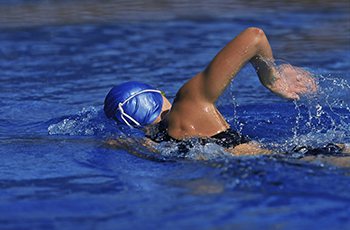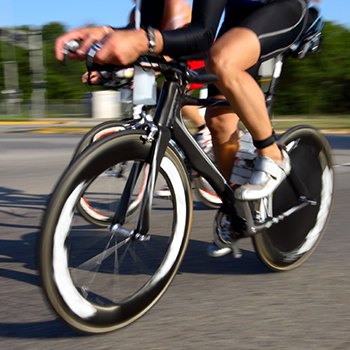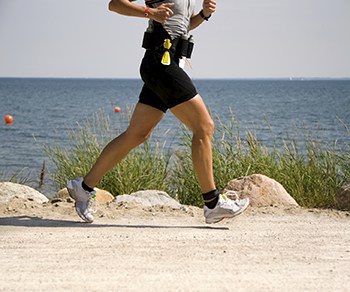Posted by CJ Bearce on 6th Nov 2015
Triathlon Checklist
It’s a common question, and we’ve all been there before. “I’m doing my first tri, and I don’t know what I need!” So let’s talk about some of the gear you'll need and some that you might want to have. As most of you know the triathlon has three sections; swim, bike, and run. Each race can vary a bit in length from a quick Super Sprint to the grueling 140.3 mile Ironman, and your gear will need to reflect the race that you are running, but let’s break this down into what you might need for each leg of the race.

Swim Gear
The first leg of the triathlon is the swim, so begin your triathlon checklist there. The most important gear is going to be something to swim in, of course. Different races have different regulations about what you can wear during the swim so it is important to check with the race organizer before you go buy a wetsuit. A lot of races do allow wetsuits, for others the water temperature may be too warm for a wetsuit, so you may want a swim skin, tri suit (more on tri suits later), or even just a swimsuit will do. If your race does allow wetsuits, there are many to choose from. Generally speaking as you go up in price, both the quality of the material (more buoyant and flexible) and the added features will improve. If you are new to triathlons, an entry level suit may work great for you, if you are a serious athlete looking to shave second off your swim consider something that will have the features to get you there.
Another piece of gear on your checklist is going to be goggles. The type of lens you are going to be looking for is going to change depending on the lighting environment of your race. Typical clear lenses are going to be good for swimming indoor or when there isn’t a whole lot of light. A smoke lens is going to be ideal in bright condition, think sunglasses. Amber lenses will add contrast in low light situations. Mirrored goggles are usually a tinted lens that has a reflective surface that further reduces glare.
Swim caps are often provided by the race, but just in case, you may want to bring one with you. A swim cap is an easy and inexpensive way to reduce resistance in the swim.
Most races will not allow swimming aids like swim fins, buoys, or swim gloves, so check the race regulations before you get there.

Bike Gear
The next section of our tri checklist is the bike, and your obvious piece of gear will be the bike itself. Check your bike before your race to make sure that it is in as good condition as you can get it, you don’t want to blow the race because your bike failed you. Consider bringing some bike tools and parts in case something should happen, you can fix it and push on.
You should also think about what you will be wearing for this leg of the race. Tri suits are designed to be worn during all three legs of the race but some athletes prefer to change into a fresh suit for the bike and run. Tri suit are designed to be tight and form fitting, with some padding to provide comfort during the bike, but not get in the way during the run and bog you down on the swim. If you need additional cushioning in the bike, bike shorts have additional padding, but you will need to change before the run. Bike jerseys are designed to wick away moisture to help keep you dry and help with temperature regulation. They also have features like reflective accents so you can be seen in low lighting and cut longer in the back so you aren’t exposed when bent over.
Almost every race is going to require you to wear a helmet, and there are a lot to choose from. The classic style of helmet is often found with a number of air vents to allow air to flow through and help keep you cool. Aero helmets have been developed in wind tunnels and are aerodynamically designed.
Aero bars attach to the bike to position you in an ideal riding form and keep you as aerodynamic as possible.
Cycling shoes clip on to your pedals so no energy from your legs is wasted. The stiffness of the sole provides support to the foot reducing the risk of cramping and a breathable upper allows ventilation and cooling.
The bike section is also when you will need to think about nutrition and hydration. There are a number of different options to quench your thirst, water bottles are the simplest solution, whether attached to your bike or worn on a hydration belt. More advanced aero-hydration systems are available that attach to the bike and have a straw so you can hydrate without breaking riding form.
In order to maintain energy levels you may want to carry some nutrition with you to fuel up. Common types of nutrition are gels and chews; both are calories dense and are largely a mixture of carbohydrates for quick energy and electrolytes to replace those lost in sweat. Some nutrition does contain caffeine for an extra boost of energy, so if you don’t do caffeine check the label before you buy.

Run Gear
The final section of our tri checklist is the run. First start with the clothes. Tri suits, which can be a one piece suit or a short and top combo, are designed to be worn during all three stages. The biggest difference between the one and two piece tri suit is ease of taking on and off. Tri suits are designed to be tight to reduce resistance and to promote wicking. The padding is going to be less substantial than in a bike short so it doesn’t get in the way but still provide comfort. Most suits will have a nutrition pocket or two to store your gels or chews for the run portion.
You also want to think about the shoes that you will be using for the run, for shorter distances you may want to go for something light for longer races go for something with a little more cushioning.
Depending on the length of the run you may want a water bottle or hydration belt to free up your hands. Some people use a body glide on points of friction to avoid chafing, so if you have uncomfortable spots you may want to invest in some.
For your convenience get a triathlon bag to haul your gear around. Tri bags are specially designed with a triathlete’s gear needs in mind, with special compartments for your wetsuit and helmet.
Let’s go over what we might need again:
